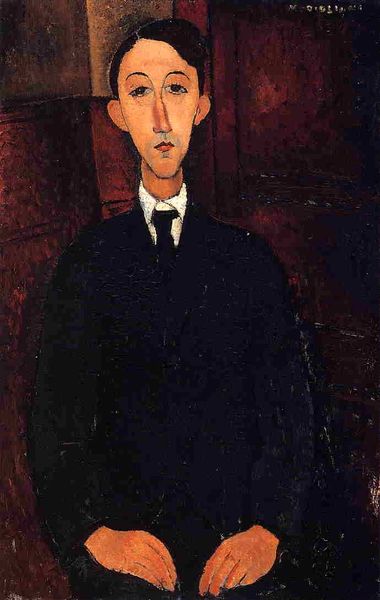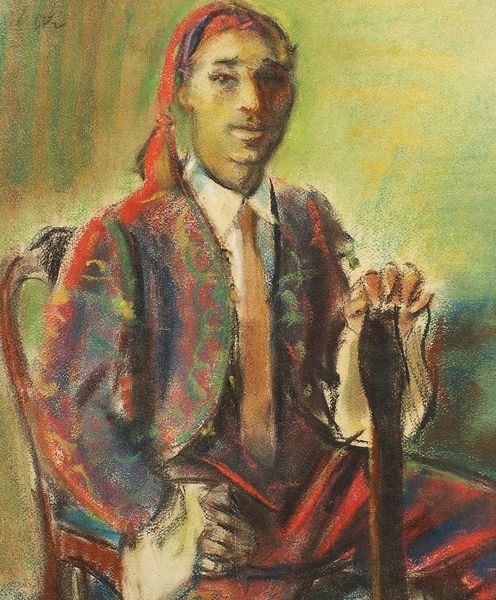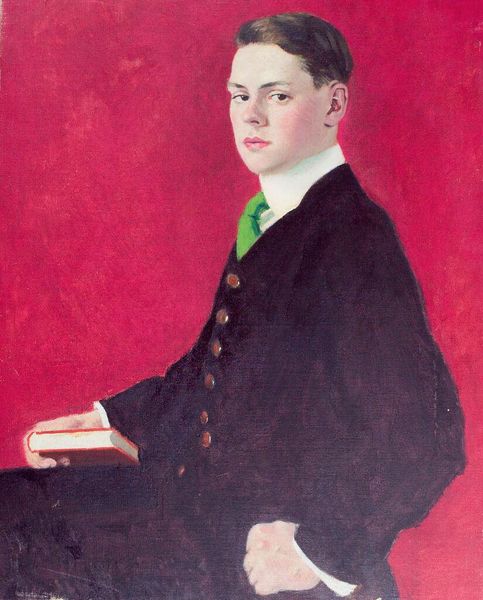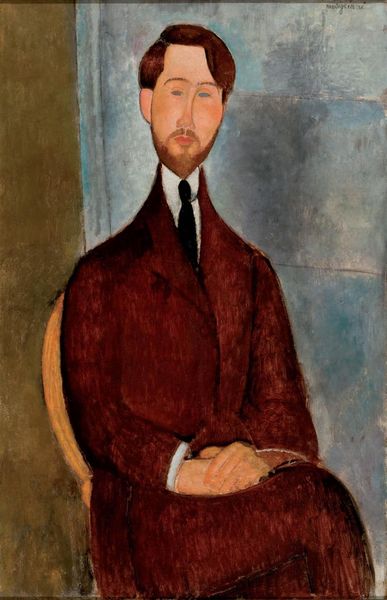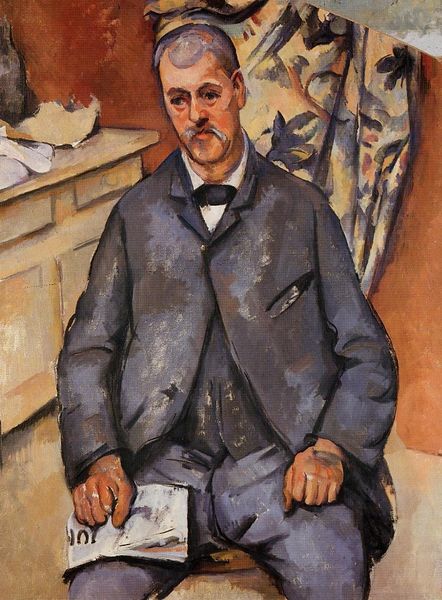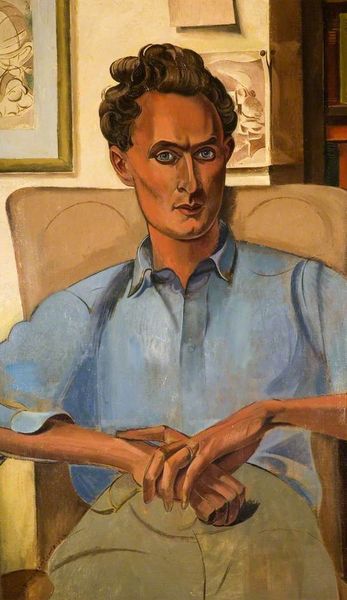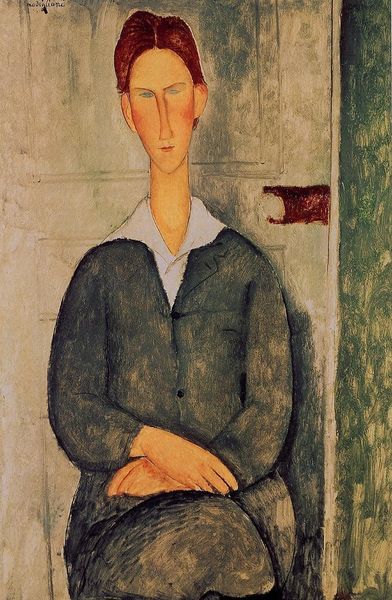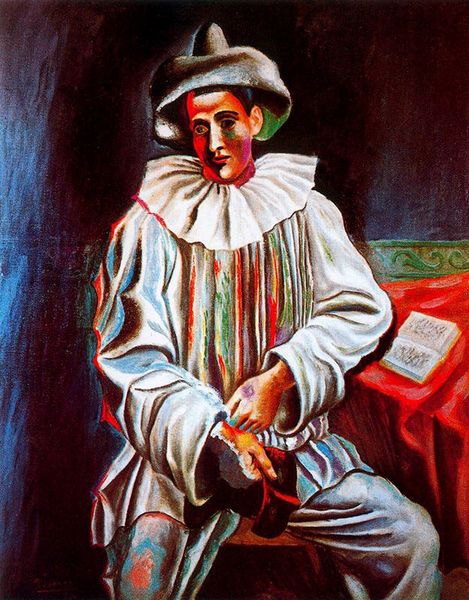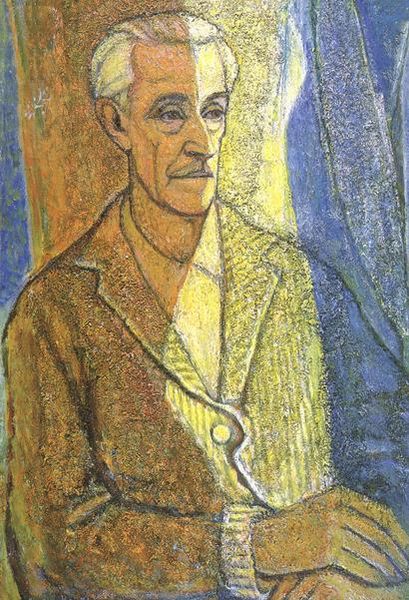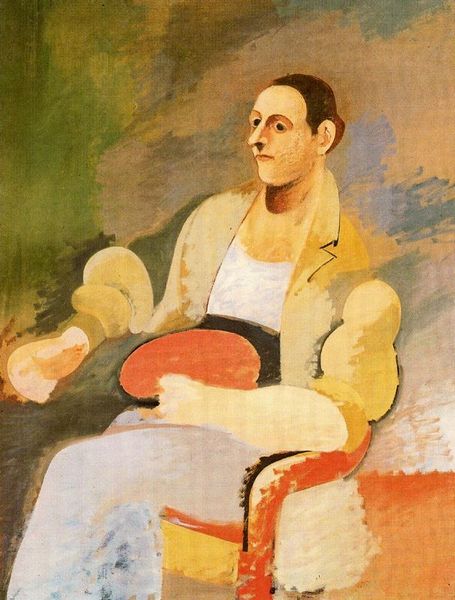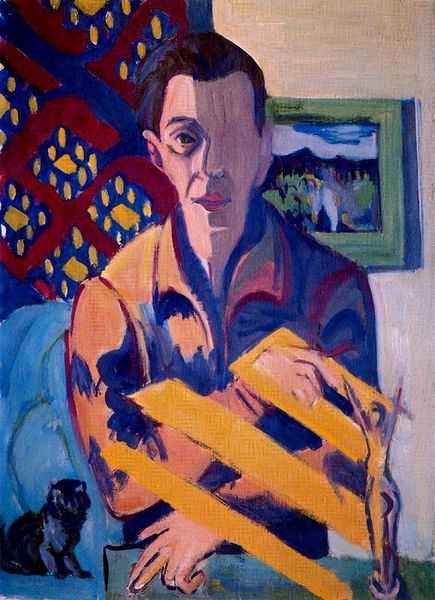
painting, oil-paint
#
portrait
#
cubism
#
painting
#
oil-paint
#
figuration
#
oil painting
#
modernism
Dimensions: 116 x 90 cm
Copyright: Public domain US
Editor: So here we have Picasso’s "Barcelona Harlequin" from 1917, done in oil paint. I’m immediately struck by the figure’s contemplative mood, despite the vibrant harlequin costume. What do you see in this piece? Curator: Looking at this, I’m drawn to the very making of the artwork itself. Notice the layering of oil paint, almost thin washes, across the canvas. How does that contribute to the final piece? Picasso’s use of these materials tells us much about the limitations, the constraints of resources during World War I in Barcelona and it suggests he had a focus on conveying more complex concepts in a world of physical scarcity. Editor: That's interesting. I hadn't really thought about the economic context. So, his choices weren't purely aesthetic? Curator: Not entirely. Consider the figure's pose. It's not particularly dynamic, more subdued. How does that pose relate to the character of the harlequin, a traditional figure of the Commedia dell'arte, often associated with performance and social commentary? The artist here gives a new vision of what a harlequin could be. Editor: It definitely subverts that playful expectation. The materiality feels… almost melancholic, if that makes sense. Like a working-class clown. Curator: Precisely. And how might the geometric patterning of the costume, typical of Cubism, reflect the broader socio-political shifts happening at the time, when industrial production started reshaping the very fabric of society and culture? Editor: I guess it shows that even something seemingly frivolous, like a clown costume, can reflect those underlying tensions. It gives me a totally new way of understanding cubism by focusing on its role in the representation of work. Curator: Exactly, and looking closely, you can really see that production itself! Focusing on those brushstrokes lets us consider those connections and challenges in society at that moment.
Comments
No comments
Be the first to comment and join the conversation on the ultimate creative platform.

